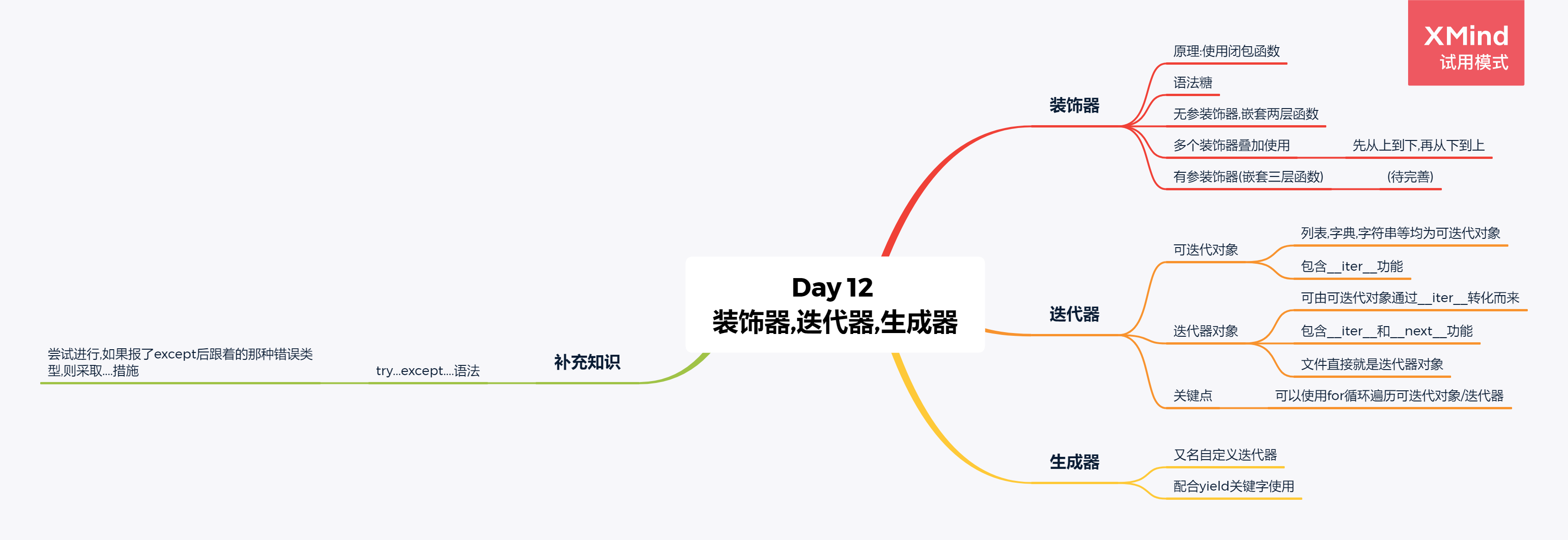
一 装饰器 Decorator
A decorator is a design pattern in Python that allows a user to add new functionality to an existing object without modifying its structure. Decorators are usually called before the definition of a function you want to decorate.
作用 Usage
Python's decorators allow you to extend and modify the behavior of a callable (functions, methods, and classes) without permanently modifying the callable itself. Any sufficiently generic functionality you can “tack on” to an existing class or function's behavior makes a great use case for decoration
简单的装饰器 Simple Decorators
def my_decorator(func):
def wrapper():
print("Something is happening before the function is called.")
func()
print("Something is happening after the function is called.")
return wrapper
def say_whee():
print("Whee!")
say_whee = my_decorator(say_whee)
语法糖 Syntactic Sugar
The way you decorated say_whee() above is a little clunky. First of all, you end up typing the name say_whee three times. In addition, the decoration gets a bit hidden away below the definition of the function.
Instead, Python allows you to use decorators in a simpler way with the @ symbol, sometimes called the “pie” syntax.
def my_decorator(func):
def wrapper():
print("Something is happening before the function is called.")
func()
print("Something is happening after the function is called.")
return wrapper
@my_decorator
def say_whee():
print("Whee!")
有参装饰器Decorating Functions With Arguments
(Remain to be improved)
二 迭代器 Iterator
An iterator is an object that contains a countable number of values.
An iterator is an object that can be iterated upon, meaning that you can traverse/'trævɜːs/遍历 through all the values.
Technically, in Python, an iterator is an object which implements the iterator protocol/ˈprəʊtəkɒl/ 协议, which consist of the methods _iter_() and _next_().
Iterator vs Iterable 迭代器与可迭代对象
Lists, tuples, dictionaries, and sets are all iterable objects. They are iterable containers which you can get an iterator from.
All these objects have a iter() method which is used to get an iterator:
Looping Through an Iterator
We can also use a for loop to iterate through an iterable object:
The for loop actually creates an iterator object and executes the next() method for each loop.
三 生成器 Generator
Generator functions allow you to declare a function that behaves like an iterator, i.e. it can be used in a for loop.
the yield keyword
yield is a keyword in Python that is used to return from a function without destroying the states of its local variable and when the function is called, the execution starts from the last yield statement. Any function that contains a yield keyword is termed as generator. Hence, yield is what makes a generator. yield keyword in Python is less known off but has a greater utility which one can think of.
Example:
def first_n(n):
'''Build and return a list'''
num, nums = 0, []
while num < n:
nums.append(num)
num += 1
return nums
sum_of_first_n = sum(first_n(1000))
print(sum_of_first_n)
and use the generator to imporve it:
def firstn(n):
num = 0
while num < n:
yield num
num += 1
sum_of_first_n = sum(firstn(1000000))
print(sum_of_first_n)